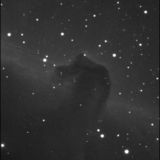INDI Library v2.0.7 is Released (01 Apr 2024)
Bi-monthly release with minor bug fixes and improvements
Support for Orion StarShoot G3 CCD
- Andrew Buck
-
 Topic Author
Topic Author
- Offline
- Junior Member
-

- Posts: 22
- Thank you received: 5
Support for Orion StarShoot G3 CCD was created by Andrew Buck
I would really like to get the camera working under linux, and might consider writing the support for indi to do that, but I would need some pointers to getting started and possibly a fair bit of handholding through the process. I am good with C and C++ and know a fair bit about hardware drivers as general theory, but the actual practice of writing one is something I have never attempted.
So my main question is two parts, first is there existing support for the G3 that I am just not properly making use of? and if not, is there someone or some guide as to how to go about writing the support code myself to run the camera through indi? Also, if there is anyone who has written drivers before and could write one for me, I would be willing to compensate you for the effort as well as try to make arrangements for access to the hardware either through setting you up with an account on my machine here or something similar for testing purposes. Currently I am just trying to explore all the possible options, and am looking forward to hearing back regarding any of these possibilities.
Please Log in or Create an account to join the conversation.
- Andrew Buck
-
 Topic Author
Topic Author
- Offline
- Junior Member
-

- Posts: 22
- Thank you received: 5
Replied by Andrew Buck on topic Support for Orion StarShoot G3 CCD
Regarding using the camera, I have a windows XP laptop that I have got set up so the camera is at least useable, but running it under linux would not only be preferable but would allow much better integration with other software for data reduction, etc. So I definitely still want to try to get it working there. I know there is software that will let you basically 'packet sniff' the USB connection to see how the wire protocol between the computer and camera goes, so in theory it shouldn't be too difficult to reproduce that in a linux driver but the exact details are still unknown to me.
Please Log in or Create an account to join the conversation.
- Jasem Mutlaq
-

- Online
- Administrator
-

Replied by Jasem Mutlaq on topic Support for Orion StarShoot G3 CCD
Please Log in or Create an account to join the conversation.
- Andrew Buck
-
 Topic Author
Topic Author
- Offline
- Junior Member
-

- Posts: 22
- Thank you received: 5
Replied by Andrew Buck on topic Support for Orion StarShoot G3 CCD
Please Log in or Create an account to join the conversation.
- Ben Gilsrud
-

- Offline
- Premium Member
-

- Posts: 153
- Thank you received: 29
Replied by Ben Gilsrud on topic Support for Orion StarShoot G3 CCD
My guess is the Orion SSG3 uses a Cypress FX2 chip as it's brain. This seems to be the most common design in the cheap astro cameras. You could crack the camera open and look to verify, but you could probably figure this out from lsusb output.
To reverse engineer the camera, you'll need a windows box. You can use a VM (virtual box works well for this). If it does have a Cypress chip, then you'll almost certainly have to load a firmware for the camera to do anything useful. Plug your camera into your machine and do an "lsusb" before giving control of the device to the windows VM. Then give the windows VM access to it. Windows should automatically load the firmware assuming you have installed the drivers. Then, you can pass control back to linux and do an lsusb again. You'll likely see a different device id for your camera which indicates the firmware has been loaded. Next, you can dump the firmware to a file so that we can load it under linux. You can use code from the meade DSI sourceforge project (sourceforge.net/projects/linuxdsi/ see src/dumper.cc) to help extract the firmware. You'll use the fx2load utility to load the firmware from linux once you've extracted it.
Once the firmware situation is dealt with (if necessary), then I would suggest taking pictures through windows while dumping the USB traffic from linux. You can use wireshark to do the snooping. You'll probably want to start out by taking pictures of all black, gray, or white scenes so that it's clear where the image data begins and ends in the raw dumps. The sensor that the StarShoot G3 uses is an ICX419. It's a field readout so you'll probably see the even and odd rows come over separately.
There'll be a lot of trial and error but it's certainly doable! If you can provide raw dumps I would be more than happy to help with this.
Thanks,
Ben
Please Log in or Create an account to join the conversation.
- Gerry Rozema
-

- Offline
- Elite Member
-

- Posts: 193
- Thank you received: 46
Replied by Gerry Rozema on topic Support for Orion StarShoot G3 CCD
The way the fx2 works, when it starts, it reads the first few bytes out of the eeprom, and checks one of them, dont remember which offhand, to see if there is firmware on board. If so, it continues loading from the eeprom, puts it into memory and executes. If it's not there, then it presents the vid/pid contained in the eeprom to the host computer, and essentially sits waiting for the host to use fx2 calls to load firmware.
If you want to poke around inside the fx2 a little, get fx2lib and sdcc set up, then you can put simple little things onto the fx2 chip to poke at sensor registers etc and figure things out if necessary.
Please Log in or Create an account to join the conversation.
- Andrew Buck
-
 Topic Author
Topic Author
- Offline
- Junior Member
-

- Posts: 22
- Thank you received: 5
Replied by Andrew Buck on topic Support for Orion StarShoot G3 CCD
-AndrewBuck
Please Log in or Create an account to join the conversation.
- Ben Gilsrud
-

- Offline
- Premium Member
-

- Posts: 153
- Thank you received: 29
Replied by Ben Gilsrud on topic Support for Orion StarShoot G3 CCD
Based on your description, I think Gerry might be right about the firmware being stored in the camera. If so, that would make things a bit easier (you wouldn't even have to consider the firmware aspect). I assumed the firmware wasn't stored on the camera because flash costs money and it's a simple cost cutting measure for cheaper cameras (it's not surprising that Starlight Xpress cameras have a flash chip).
Thanks,
Ben
Please Log in or Create an account to join the conversation.
- Gerry Rozema
-

- Offline
- Elite Member
-

- Posts: 193
- Thank you received: 46
Replied by Gerry Rozema on topic Support for Orion StarShoot G3 CCD
It's a mindset that spills over from high volume consumer manufacturing, cut every penny out of the production cost where possible, but, imho it's a mistake for high value items in low production volumes.
The other thing that kinda surprised me a few years ago, when I started looking into the issue in a bit of detail. If you haul out the datasheet for the fx2, and any given sensor inside the camera, there really is only one way they can be wired together. The example I was looking at then was the qhy5, and when you look at the data sheet for the Mt9M sensor, and the fx2, you quickly come to the conclusion that there are only a couple questions to be answered. Is the data path wired up with only 8 bits between sensor and fx2, or, did they wire up all 10 bits as a 16 bit shift into the fx2 usb buffers ? the other questions, which gpio are used for the autoguider ports ? If one answers those two questions, then it's not a terribly difficult project to write a firmware for the fx2 that makes the unit functional. for higher end cameras, there would be a few more questions to answer, regarding how the cooling is implemented. But again, it's one function to read a temperature somewhere, then one of the digital io pins that turns the cooler off and on.
When I started really digging into it, I was quite surprised to realize, all of our astro related cameras are an fx2 with a sensor. That's the SBIG ST-10 we got as part of a package deal when we bought an observatory lock stock and moat, as well as our SX cameras we had prior to that, and the qhy cameras we had for guiders. And as it turns out, the Meade DSI is 'yet another', altho I didn't realize it at the time.
If I had enough spare time (which I dont these days), I think it would be a fun project to start from first principles and data sheets, then work up some firmware for the various cameras. If one takes the approach of the qhy firmware, just a set of function calls that allow a program on the host to set registers etc, it's quite realistic to come up with one firmware that will work with any fx2 based cameras, and all the camera specific smarts reside on the host computer, where it's much easier to work with things.
Maybe some day, when I have more spare time, i'll start fiddling with that idea. I have more than enough fx2 based cameras here to get a long ways into that kind of a project.
Please Log in or Create an account to join the conversation.
- Mika Hämäläinen
-

- Offline
- New Member
-

- Posts: 1
- Thank you received: 0
Replied by Mika Hämäläinen on topic Support for Orion StarShoot G3 CCD
Please Log in or Create an account to join the conversation.
- Emmanuel COLETTI
-

- Offline
- New Member
-

- Posts: 7
- Thank you received: 0
Replied by Emmanuel COLETTI on topic Support for Orion StarShoot G3 CCD
I own a Brightstar Mammut Lyuba L429 which ressembles very much the Starshoot G3 from ORION, and is also based on the AVR32 UC3 chip from AMTEL. I'm looking for an INDI driver for this camera since I can only use it on windows for the time being (ASCOM driver works fine), and I would like to move to Linux (Rapbian).
Did you manage to build you driver eventually ? That would be the last chance I have to make ma camera work on linux
Enjoy the stars,
Emmanuel
Please Log in or Create an account to join the conversation.
- Andrew Buck
-
 Topic Author
Topic Author
- Offline
- Junior Member
-

- Posts: 22
- Thank you received: 5
Replied by Andrew Buck on topic Support for Orion StarShoot G3 CCD
Please Log in or Create an account to join the conversation.
